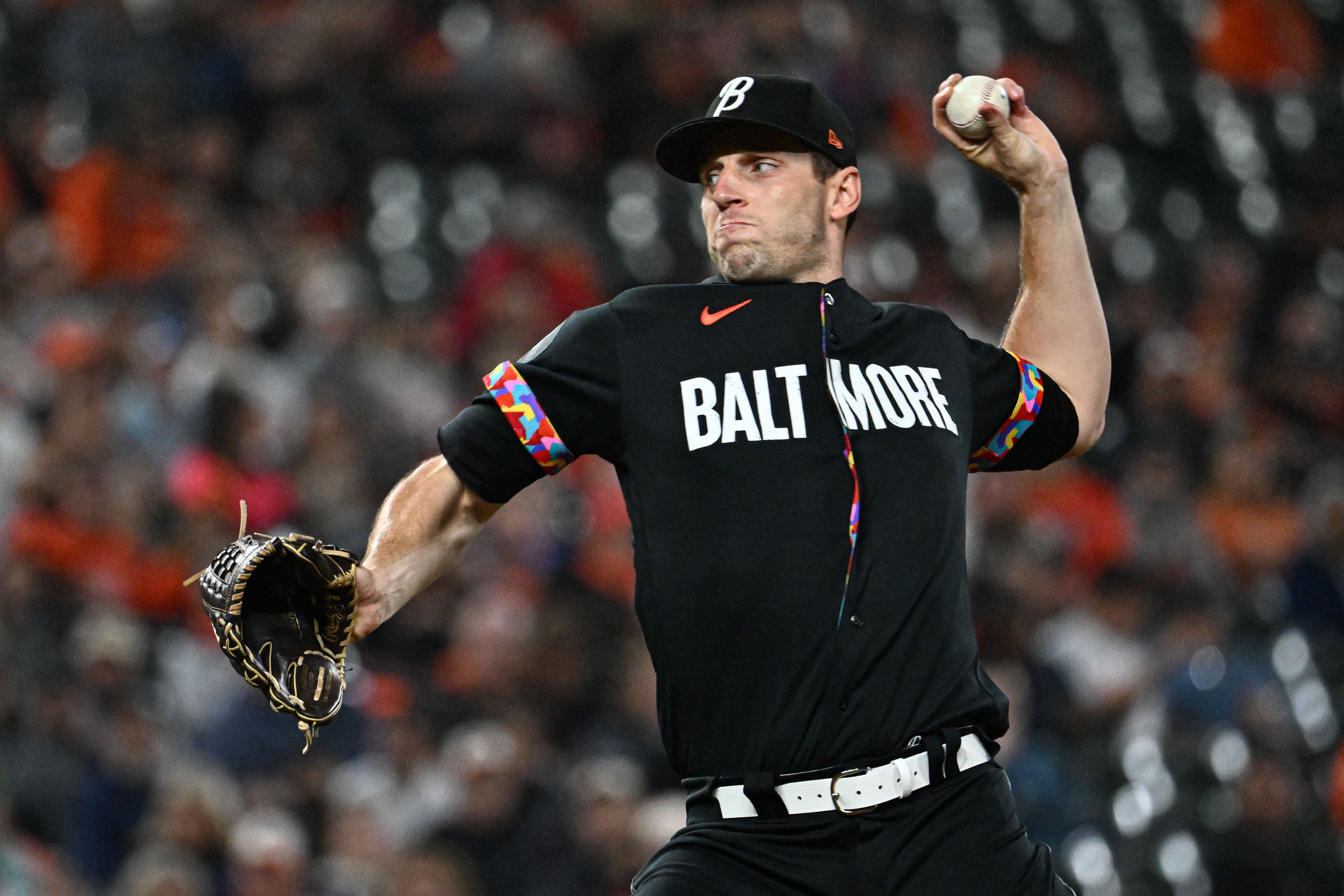
Sep 29, 2023; Baltimore, Maryland, USA; Baltimore Orioles starting pitcher John Means (47) throws a first inning pitch against the Baltimore Orioles at Oriole Park at Camden Yards. Mandatory Credit: Tommy Gilligan-USA TODAY Sports
I’m a little late to the party when it comes to writing about the epidemic of pitching injuries in Major League Baseball, so I’ll start out by taking you back in time.
When I first got to Baltimore, current Orioles color commentator Ben McDonald was the most prized pitching prospect in the sport and was entering his first full big league season.
He was a hard thrower, and he had pitched a ton of innings in college, so it probably should have been no surprise that he would experience arm soreness during the early part of a career that might have been better and longer if he had not been pushed too hard to pitch through the discomfort and fatigue.
I brought this up to manager Frank Robinson and pitching coach Al Jackson at the time, but both were old-school guys who had toughed out injuries during their own careers and expected their players to do the same.
When I approached Jackson once after Ben told me his elbow was sore, he tried to put my mind at ease.
“Son,” he said, “the first time a pitcher picks up a baseball, his arm is going to hurt and it’s going to keep hurting until he puts it down for good.”
Of course, there’s a difference between normal post-performance soreness and all the frayed ulnar collateral ligaments that are making news these days. Pitchers have been getting Tommy John surgery for a half-century now, but not at the rates they have over the past few years.
The Orioles have felt the impact as much as any team in the majors, losing pitching ace John Means for what will be almost three full seasons after having reconstructive elbow surgery for the second time last month, and dominant closer Félix Bautista to the procedure from last August through the rest of this season. The club will also be without promising Tyler Wells for the rest of the year with a UCL injury.
Reliever Danny Coulombe just went on the injured list with left elbow inflammation, the severity of which is not yet clear, and Kyle Bradish, whose season was delayed by a sprain of the right ulnar collateral ligament, left Friday night’s game against the Phillies because of elbow soreness. Tests will determine what’s next for Bradish.
The problem is industry-wide and the increase in the frequency of severe arm injuries is undisputed. Three of the last four Cy Young Award winners have been sidelined for significant periods with arm or shoulder problems.
Marlins ace Sandy Alcántara, the 2022 NL Cy Young winner, will miss this season after having the Tommy John procedure. Justin Verlander, who won the 2022 American League Cy Young Award after having elbow reconstruction, just recently returned to the Astros’ rotation from a shoulder injury. And Yankees star Garrett Cole is nearing a return from a nerve inflammation in his elbow.
The question is not whether there are more serious injuries but why, and there really is no one-size-fits-all explanation. The easiest conclusion to jump to is MLB’s introduction last season of the pitch clock to speed up games, which might or might not be a coincidence. The players union was quick to make the connection, while Major League Baseball cites an as-yet-unpublished Johns Hopkins University study that reportedly found no direct cause-and-effect relationship.
It’s easy to speculate about several possible factors. Clearly, arm fatigue plays a major role, even though starting pitchers are throwing far fewer innings than the Hall of Fame starters of yesteryear. The smaller workloads, however, likely are offset by the industry-wide obsession with velocity and the wider selection of pitches employed today, which require multiple arm angles and grips that can put more pressure on the elbow.
I didn’t major in kinesiology, but I think the major factor is right there on your television screen. It’s the miles-per-hour number that appears on most broadcasts when each pitch registers in or around the imaginary strike zone box.
The announcers swoon every time a pitcher hits triple digits and suddenly throwing 90 in high school and 93 in college isn’t enough. Every talented kid is in the weight room trying to get stronger and – as we all know – the bigger the muscles, the more vulnerable the ligaments and tendons.
What’s the answer? There really isn’t one, unless you subscribe to the ridiculous theory that every hard-throwing pitcher in the low minor leagues should get Tommy John surgery ahead of time.
What happened? Cade Povich allowed five runs in the third inning as the Orioles lost…
Fans eager for a new scoreboard at Camden Yards will have their wish next season.…
Question: Just curious on your thoughts on what the Orioles will focus on or have…
Relief pitcher Bryan Baker joined the Orioles for the 2022 season and is in his…
On the final day of a weekend-long Star Wars promotion, the Orioles and Kansas City…